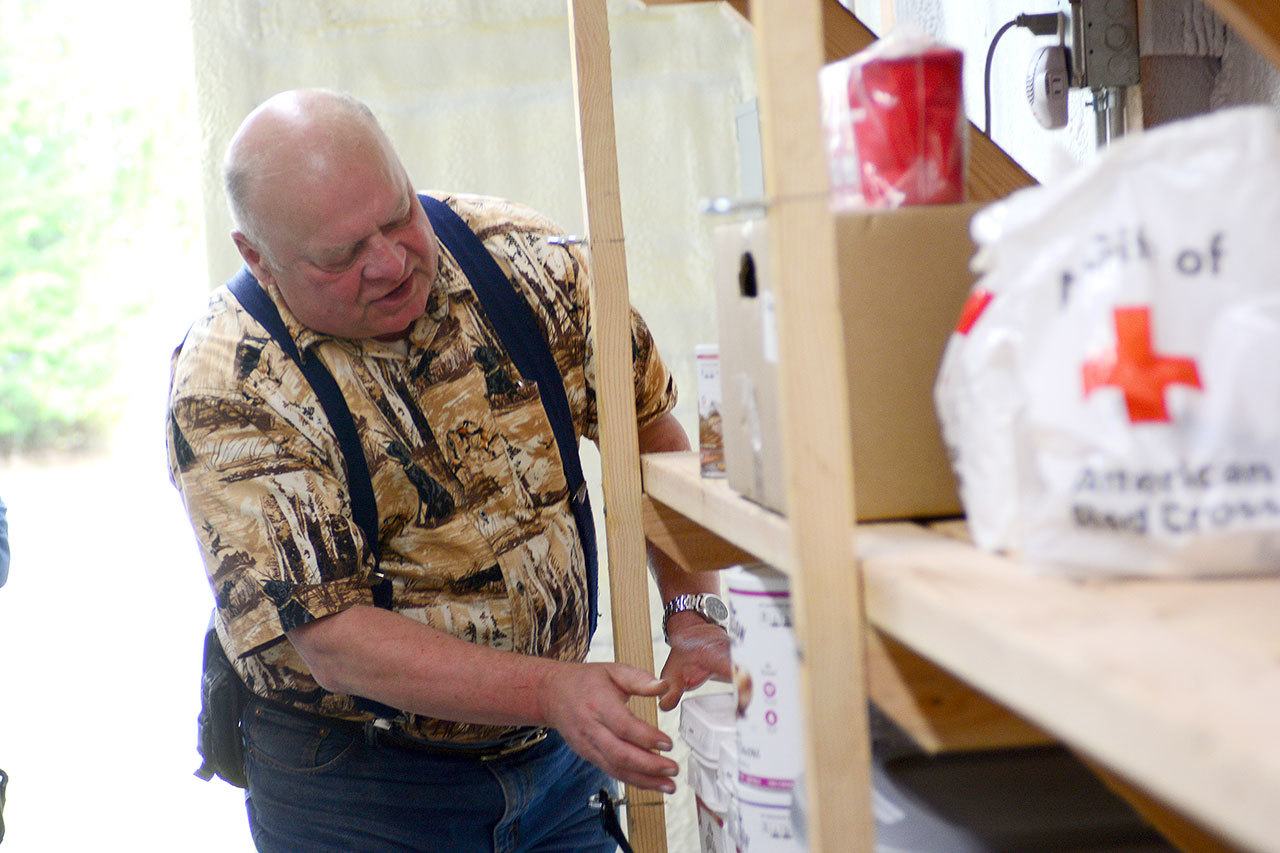JOYCE — A group in Joyce wants its residents to be prepared for a massive earthquake.
Researchers have said it’s not a question of if but when a quake of at least 9.0 magnitude will strike in the Cascadia Subduction Zone, a fault that stretches from Vancouver Island to Northern California.
The last major quake along the entire Cascadia fault occurred in 1700. It dropped parts of the Olympic Peninsula coast by 5 feet and triggered a tsunami that pounded the Pacific Northwest and washed away houses in Japan, researchers have said.
Scientists have estimated that massive quakes are triggered along the fault every 500 to 600 years. An Oregon State University team suggested in 2008 that the frequency could be more like every 200 to 240 years.
Earlier this summer, a region-wide drill, Cascadia Rising, sought to practice response to such a quake.
The Joyce Emergency Planning and Preparation group has been preparing for the past year.
Members have worked to gather supplies and food, train residents for an emergency and reduce risks in and around Joyce.
“We realize it may not happen in our lifetime,” said group member Rae Leiper.
“It might be 100 years; it might be next week. Who knows?”
The group was spearheaded by Jim Buck, an earthquake-preparedness activist in Joyce and a former state legislator.
Buck said that when the earthquake hits, Joyce, which is west of Port Angeles on state Highway 112, will be on its own.
“We don’t expect any of the bridges to survive in Clallam County,” Buck said.
“Right off the bat, that means when the Elwha River bridges go down, Joyce is cut off.”
Joyce residents will need to survive on their own for a minimum of three weeks before any outside help will come, he said.
To help in preparations, a community meeting is scheduled for 6 p.m. Oct. 24 at the Crescent Grange, 50870 state Highway 112 in Joyce.
Buck and others in the group noticed that once the earthquake hits, Clallam County will be split into 20 “micro-islands.”
The Joyce micro-island will have to fend for itself, Buck said.
“It became apparent that we might want something to eat out here,” he said.
Buck and his wife, Donna, donated a shipping container that is being used to store food and other supplies. It is fitted with a dehumidifier, electricity, shelving and insulation.
The shelving supplies were donated by other community members, Buck said. In the shipping container already is a small portion of food and other supplies, including 86 shrink-wrapped surplus sleeping bags donated by the U.S. Forest Service, he said.
Another member of the group, Bruce Leiper, said the plan is to start a significant fundraising effort soon. Funds will be funneled through the Joyce Fire Department Auxiliary, he said.
Others in the group are starting work to ensure propane tanks in and around Joyce are secured. During an earthquake, unsecured propane tanks become a significant fire risk, Buck said.
“After the fact, all of a sudden the fuel you absolutely bet your life on for being able to cook, heat water for drinking and keep your place warm is gone,” he said.
Organizers said when they were preparing their plan, they tried looking for other communities to emulate.
They didn’t find any on the same scale, they said, and hope they can be a model for other communities.
Robert Ezelle, director of Washington’s Emergency Management Division, said that while the state deals primarily with counties and larger cities, he applauds Joyce’s proactive approach.
“To look realistically at the impacts of this magnitude 9.0 earthquake in terms of isolation, looking after each other and making sure the community can survive is absolutely critical,” he said.
Ezelle said he is aware of several communities in the state that are taking steps to prepare.
Pat Baxter, another member of the Joyce group, is coordinating training sessions for amateur radio operators, involvement in the Community Emergency Response Team and how to run a shelter.
Baxter, a Red Cross volunteer, said that when the earthquake hits, the American Red Cross will not be able to set up shelters immediately. The first shelter will need to be operated by the community.
The plan is to use Joyce Bible Church’s gym as a shelter. Organizers feel confident the building will survive the earthquake.
She said amateur radio operators will help with communication from one end of the valley to the other.
Though there is little doubt the earthquake will hit, the question is when.
The group plans to be prepared regardless.
It is documenting everything it does to prepare and to include the younger generation, group members said.
The group hopes to have enough food that would feed 100 people for three weeks by the end of 2017, as well as sleeping and daily living supplies.
While the group is taking steps to prepare, Buck said residents need to prepare as well.
They are planning to support 300 people, meaning about 3,400 people would need to provide for themselves, he said.
“The more people that are prepared to do that and have enough chow for 30 days, the more secure the neighborhood is going to be,” Buck said.
“We can do a lot of things to help after the event, but for the most part, if enough people aren’t prepared to take care of themselves, then our efforts will fail.”
For more information, email jepp.group@gmail.com.
________
Reporter Jesse Major can be reached at 360-452-2345, ext. 56250, or at jmajor@peninsuladailynews.com.

